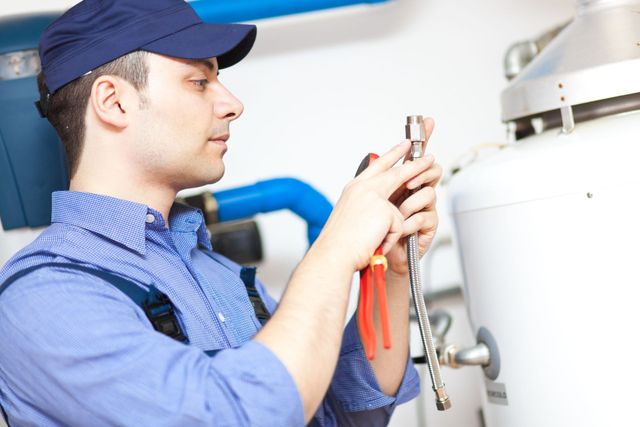Key Advice on Caring for Your Home's Hot Water System
Key Advice on Caring for Your Home's Hot Water System
Blog Article
How do you feel about How to Maintain Your Water Heater & Prolong its Life?

Hot water is crucial for day-to-day comfort, whether it's for a rejuvenating shower or washing dishes. To guarantee your warm water system runs successfully and lasts longer, normal upkeep is crucial. This post offers useful tips and understandings on exactly how to maintain your home's hot water system to stay clear of disturbances and expensive repair work.
Introduction
Keeping your home's warm water system might seem overwhelming, however with a few straightforward steps, you can ensure it runs smoothly for years ahead. This overview covers whatever from recognizing your hot water system to do it yourself maintenance tips and understanding when to hire professional aid.
Significance of Maintaining Your Hot Water System
Regular upkeep not only expands the lifespan of your warm water system but additionally ensures it runs successfully. Overlooking maintenance can bring about reduced performance, higher energy costs, and even early failing of the system.
Signs Your Warm Water System Demands Maintenance
Recognizing when your warm water system needs interest can prevent major concerns. Keep an eye out for indications such as irregular water temperature, strange sounds from the heater, or corroded water.
Understanding Your Warm Water System
Before diving right into maintenance jobs, it's handy to comprehend the basic elements of your warm water system. Usually, this consists of the water heater itself, pipelines, anode rods, and temperature level controls.
Monthly Maintenance Tasks
Normal monthly checks can assist catch minor concerns before they intensify.
Purging the Water Heater
Purging your hot water heater removes debris build-up, improving performance and prolonging its life.
Checking and Replacing Anode Rods
Anode rods avoid rust inside the container. Checking and changing them when broken is critical.
Examining and Changing Temperature Level Setups
Readjusting the temperature level setups makes certain optimum performance and safety and security.
DIY Tips for Maintenance
You can do a number of upkeep jobs on your own to maintain your warm water system in leading problem.
Looking for Leakages
On a regular basis examine pipes and connections for leaks, as these can result in water damage and higher costs.
Testing Pressure Relief Valves
Checking the stress safety valve guarantees it functions correctly and avoids extreme stress build-up.
Shielding Pipelines
Shielding hot water pipes reduces heat loss and can save energy.
When to Call an Expert
While DIY maintenance is helpful, some concerns call for specialist experience.
Facility Concerns Needing Expert Assistance
Examples include major leaks, electrical troubles, or if your hot water heater is regularly underperforming.
Routine Specialist Maintenance Benefits
Specialist upkeep can include thorough examinations, tune-ups, and guaranteeing conformity with security standards.
Verdict
Routine maintenance of your home's warm water system is vital for efficiency, long life, and expense savings. By adhering to these tips and understanding when to look for expert help, you can make certain a reputable supply of warm water without unforeseen disruptions.
Water Heater Maintenance Tips
Test the TPR Valve
Shut off the power and the cold-water supply valve. Place a bucket under the pipe connected to the temperature-pressure-release (TPR) valve on the top or side of the tank. (This valve opens if the tank pressure gets too high.) Lift the valve’s tab to let some water out, then let go. If water keeps flowing, drain the tank partway, unscrew the old valve with a pipe wrench, and install a new one. Check the Anode Rod
Put a hose to the tank’s drain cock and let out a few gallons of water. Now fit a 1 1/16-inch socket onto the rod’s hex head on top of the heater (or under its top plate) and unscrew the rod. If it’s less than ½ inch thick or coated with calcium, buy a new one, wrap its threads with Teflon tape, put it back in the tank, and tighten securely. Use this segmented rod if headroom above the tank is limited. Drain the Tank and Wash Out Sediment
Drain the remaining water in the tank into the bucket, then stir up the sediment on the tank’s bottom by briefly opening the cold-water supply valve. Drain and repeat until clean water comes out of the hose. Close the drain cock, refill the tank, and turn its power back on. Adjust the Temperature
Find the temperature dial on the side of the tank and unscrew its cover. Adjust the dial to 120 degrees using a flathead screwdriver. For every 10 degrees the temperature is lowered, you can expect to save up to 5 percent in energy costs. Turn the water heater off or the thermostat down to its lowest setting if you plan to be away from home for more than three days. Insulate the Pipes
Buy some self-sticking 3/8-inch-thick foam pipe insulation that matches the pipes’ diameter. Slide the foam over the hot-and cold-water pipes as far as you can reach. Insulating the cold-water pipe prevents condensation in summer. Peel the tape and squeeze the insulation closed. If the pipe is 6 inches or less from the flue, cover it with 1-inch-thick unfaced fiberglass pipe wrap. https://www.thisoldhouse.com/plumbing/21016402/how-to-maintain-a-water-heater

I stumbled upon that blog entry on Tips on Maintaining a Water Heater while doing a lookup on the search engines. Liked our content? Please quickly share it. Help someone else locate it. Thanks so much for your time invested reading it.
Visit Website Report this page